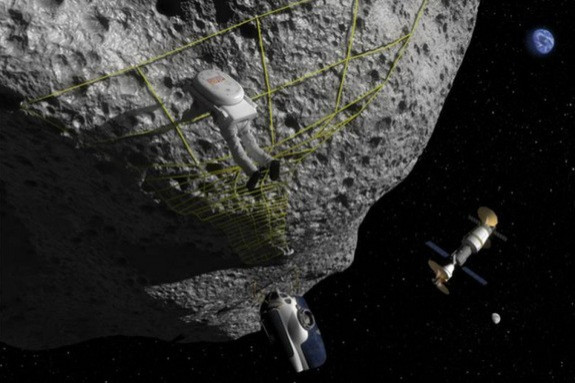Send Astronauts to Asteroids? Report Suggests More Info is Needed

Man has already been jettisoned into outer space and taken a jaunt across the moon, but a new report finds that being able to launch human missions to asteroids might aid in the thwarting of potentially devastating asteroid strikes, Space.com reported.
The report concludes that what is most needed to ensure manned asteroid missions are possible is a comprehensive survey of the Near Earth Object (NEO) population. NEOs are objects in the Solar System whose orbit bring them close to (and sometimes right at) the earth.
NEOs include meteoroids, asteroids, and comets.
Experts at George Washington University lent their views to the report, titled, Target NEO: Open Global Community NEO Workshop.
The body of information needed in order to know how to send humans on asteroid missions is severely limited at this time, the report found.
Nevertheless, there is a growing list of NEO exploration supporters and stakeholders, said Paul Abell, lead scientist for planetary small bodies at the Astromaterials Research and Exploration Science Directorate of NASA's Johnson Space Center in Houston.
The report is really timely, Abell said, as small bodies have become a magnet for multiple interest groups in the U.S. and abroad.
For example, NASA recently chose an asteroid sample return mission called Origins-Spectral Interpretation-Resource Identification-Security-Regolith Explorer, or OSIRIS-Rex, which will be the first U.S. mission to carry samples from an asteroid back to Earth.
And other countries are following suit.
Japanese space officials are moving forward with their Habyabusa 2 asteroid explorer. Russia is readying its Phobos-Grunt spacecraft to explore a moon of Mars. And Canada has its dual-purpose microsatellite, NEOSSAT.
We will soon begin writing the next chapter of our human spaceflight saga, and a near-Earth object may be humanity's first destination beyond the Earth-moon system, said Brent Barbee, editor of the report and a flight dynamics engineer at NASA's Goddard Space Flight Center in Greenbelt, Maryland. There are many decisions to be made regarding how we approach that challenge.
While much more work is required to support human missions outside of the Earth's protective magnetosphere, Barbee said he and his colleagues hope the new workshop report will be a reference tool for decision-making.
© Copyright IBTimes 2024. All rights reserved.





















